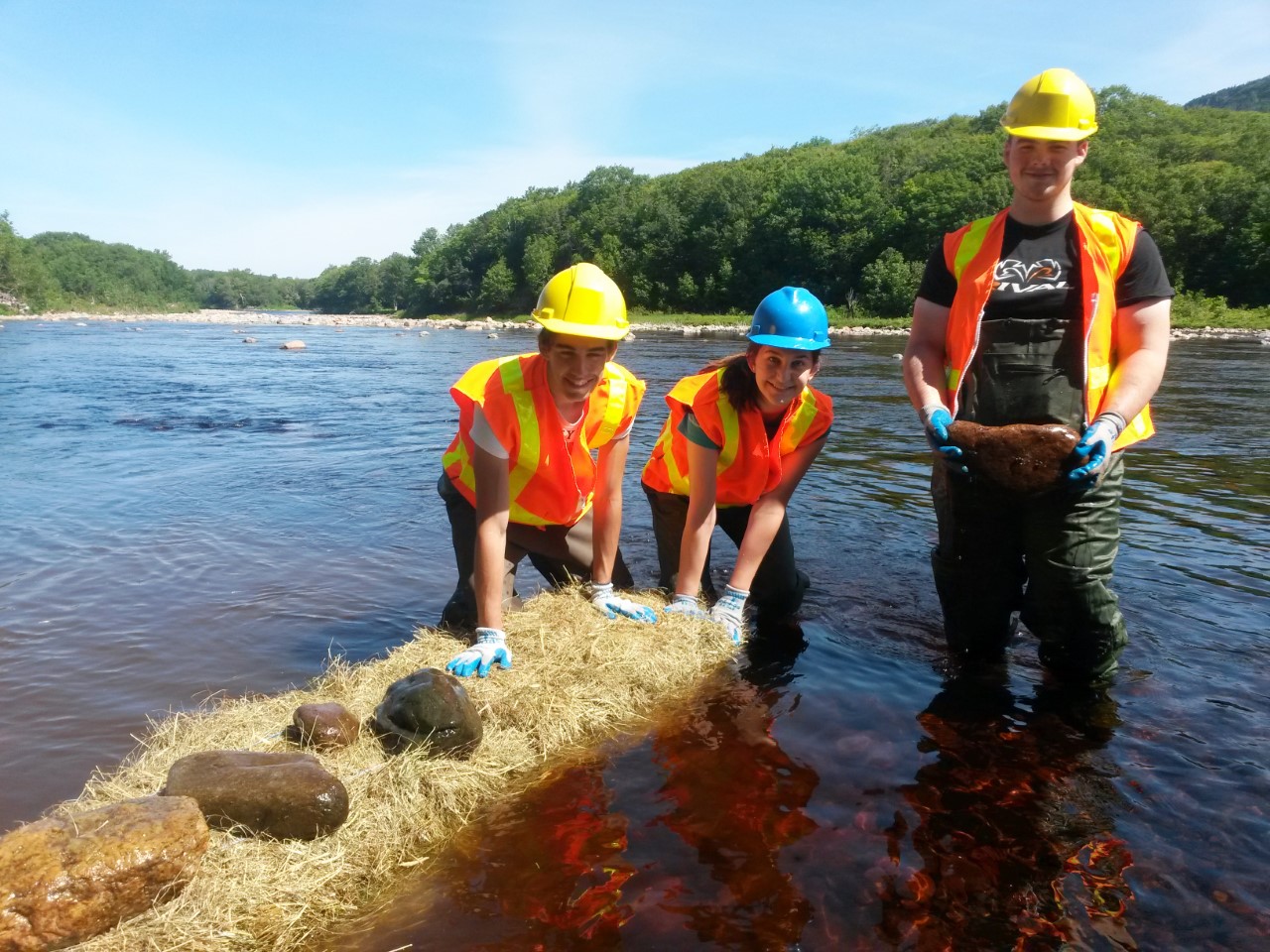Cheticamp River Salmon Association
May 12, 2017It’s always nice to have a clear and wide path when you’re trying to make your way to your destination, and fish are no different.

The Chéticamp River Salmon Association (CRSA) has been working hard in recent years to improve the fish passage on the lower Chéticamp River. The river flows almost entirely through th Cape Breton Highlands National Park and has one of only two healthy spring salmon runs left in Nova Scotia.
The project has been ongoing for several years, and in 2016 the Atlantic Salmon Conservation Foundation helped out with a $7500 grant for Phase III.
The intent of Phase III was to improve fish passage and restore freshwater habitat for Atlantic salmon. It involved continuing work from 2014 and 2015 that focused on installing instream structures – primarily rock retarding bars – at critically over widened locations to encourage the river to gradually narrow and deepen.
The CRSA realized that restoration work was required as human impacts – including past logging and poor bridge placement – as well as warmer water temperatures and lower water levels in the crucial month of June, have negatively impacted the river.
The habitat restoration team identified three objectives for Phase III work:
- Improve fish passage through the over-widened runs and riffles on the lower Chéticamp by installing instream structures according to restoration plan;
- Increase productivity of Atlantic salmon by improving habitat in over-widened riffles and runs and increasing access to upstream spawning and rearing habitat;
- Reduce bank erosion and scouring of reeds in the lower Chéticamp caused by the river freezing and the creation of ice jams in the over-widened sections.
Phase III of the habitat restoration work resulted in the successful completion of work at three sites: below the Cabot Trail, Robert’s Brook, and Faribault Brook. A total of 15 instream structures were installed, and maintenance was carried out to an additional three structures. The instream work resulted in approximately 2,500 m (75,000 m2) of more easily accessible habitat and approximately 1300 m (length) 45,000 m2 (area) of restored habitat.
The CRSA notes that while this most recent work will not completely restore the Chéticamp River to pre-impact conditions, it will improve conditions and increase access to important upstream spawning and rearing habitat.
While the project initially began as a three year project, the CRSA is looking beyond to at least a forth year for restoration and will continue with monitoring and possibly maintenance of structures going forward.
